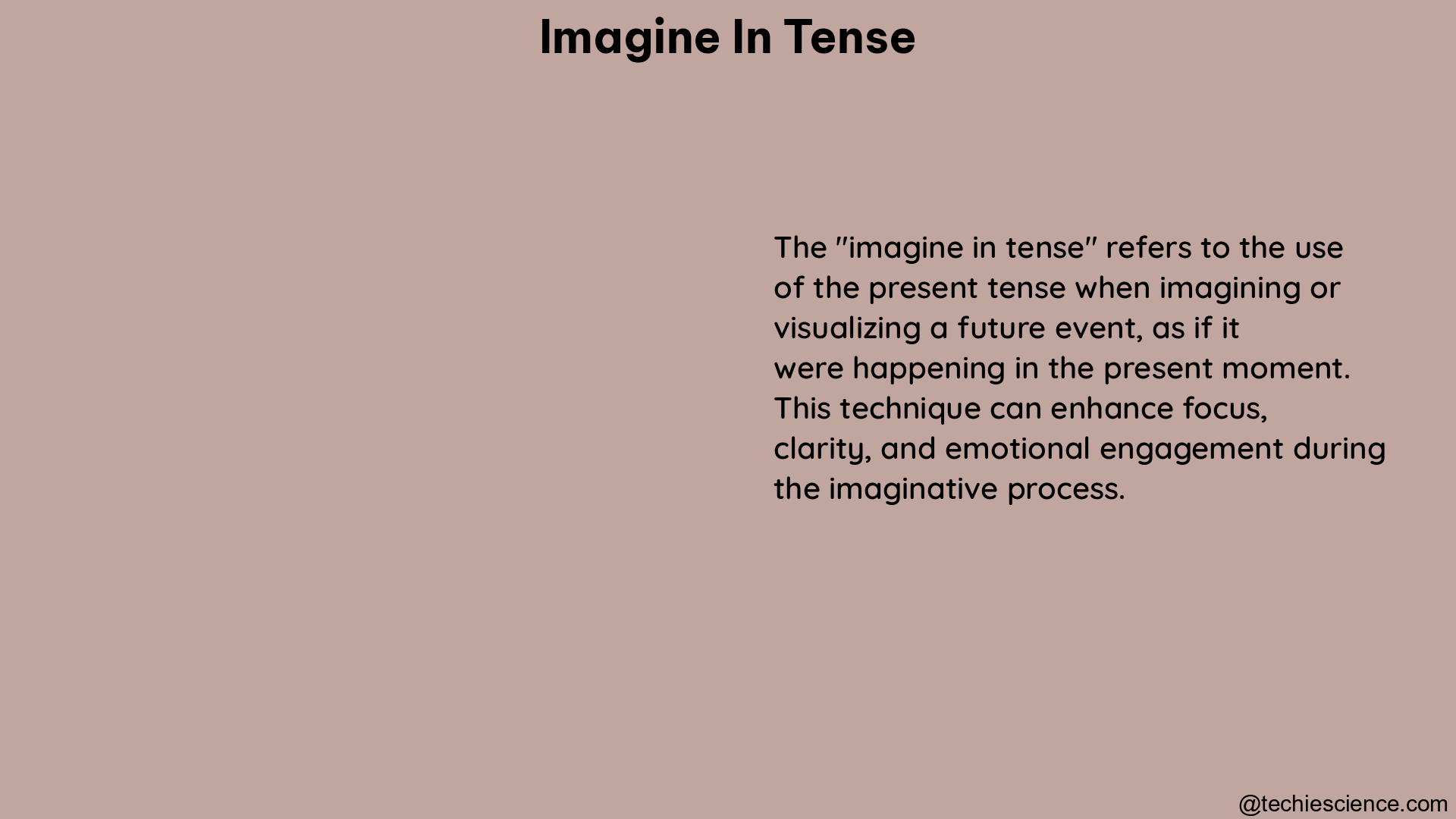The verb “imagine” is a versatile and essential part of the English language, allowing us to explore the realms of creativity, contemplation, and expression. As a regular verb, it follows a standard pattern for conjugation across various tenses, each with its unique nuances and applications. In this comprehensive guide, we will delve into the intricate details of the “imagine” verb, providing you with a thorough understanding of its usage in different tenses.
Present Simple Tense
The present simple tense of the verb “imagine” is used to express habitual or general actions, thoughts, or states of being. It conveys the idea that the action of imagining occurs regularly or as a general truth.
Examples:
– I imagine a world where peace and harmony prevail.
– She imagines a successful career in the field of art.
– They imagine the possibilities of a brighter future.
Present Continuous Tense

The present continuous tense of the verb “imagine” is used to express an ongoing or temporary action of imagining. It conveys the idea that the act of imagining is happening at the present moment.
Examples:
– I am imagining a new design for my home.
– She is imagining a solution to the problem at hand.
– They are imagining the impact of their decisions.
Simple Past Tense
The simple past tense of the verb “imagine” is used to express an action of imagining that occurred in the past and has been completed.
Examples:
– I imagined a thrilling adventure during my vacation.
– She imagined a different career path before deciding on her current one.
– They imagined the consequences of their actions before taking the leap.
Past Continuous Tense
The past continuous tense of the verb “imagine” is used to express an ongoing or temporary action of imagining that was happening in the past.
Examples:
– I was imagining a better future for myself while facing challenges.
– She was imagining a solution to the problem as the deadline approached.
– They were imagining the possibilities of a new venture during their brainstorming session.
Present Perfect Tense
The present perfect tense of the verb “imagine” is used to express an action of imagining that has been completed in the past, but the results or effects of that action are still relevant in the present.
Examples:
– I have imagined a better life for myself, and now I’m taking steps to make it a reality.
– She has imagined a successful career, and her hard work has paid off.
– They have imagined a sustainable future, and now they are implementing their plans.
Past Perfect Tense
The past perfect tense of the verb “imagine” is used to express an action of imagining that had been completed before another past action or event occurred.
Examples:
– I had imagined the perfect vacation, but the unexpected circumstances changed my plans.
– She had imagined a different outcome, but the reality turned out to be even better.
– They had imagined the challenges they might face, which helped them navigate the situation more effectively.
Future Simple Tense
The future simple tense of the verb “imagine” is used to express an action of imagining that will occur in the future.
Examples:
– I will imagine a brighter future for myself and work towards it.
– She will imagine new possibilities as she embarks on her next venture.
– They will imagine the impact of their decisions before taking action.
Future Continuous Tense
The future continuous tense of the verb “imagine” is used to express an ongoing or temporary action of imagining that will be happening in the future.
Examples:
– I will be imagining new ways to improve my skills during my free time.
– She will be imagining the next steps in her career as she prepares for a promotion.
– They will be imagining the potential challenges and opportunities as they plan for the future.
Future Perfect Tense
The future perfect tense of the verb “imagine” is used to express an action of imagining that will be completed by a certain point in the future.
Examples:
– I will have imagined a comprehensive plan for my business by the end of the week.
– She will have imagined a new design for the project before the client meeting.
– They will have imagined the impact of their decisions by the time they make the final call.
By understanding the nuances of the “imagine” verb in different tenses, you can effectively convey your thoughts, ideas, and aspirations with precision and clarity. This comprehensive guide serves as a valuable resource for English language learners and enthusiasts alike, empowering you to master the art of “imagine” in tense.
References:
- https://www.theconjugator.com/english/verb/to%2Bimagine.html
- https://preply.com/en/question/what-is-the-simple-past-tence-of-imagine-72798
- https://www.wordreference.com/conj/enverbs.aspx?v=imagine

Hi…. I am Goutam Datta. I have completed a double M. A. in English and B. Ed. I am a creative writer. Currently, I am a part of the LambdaGeeks.